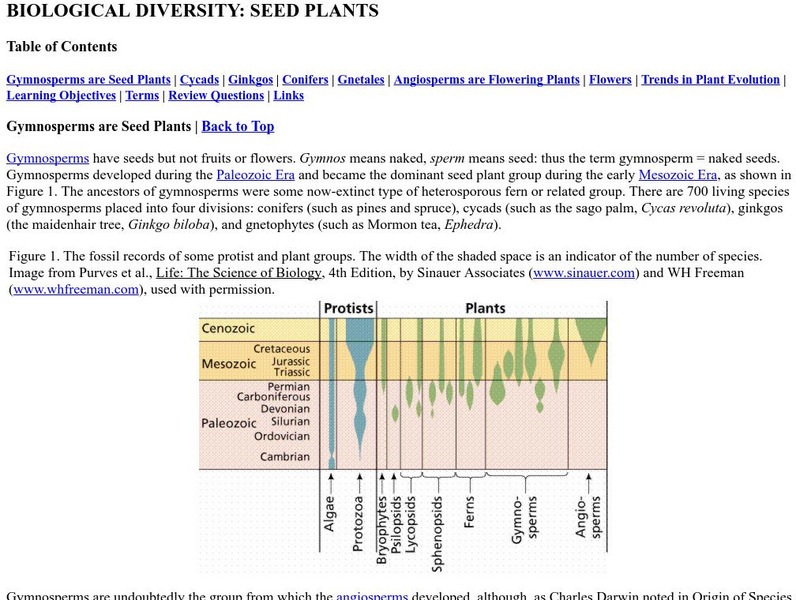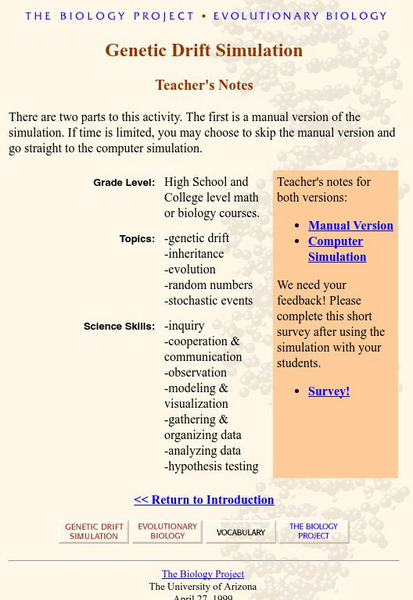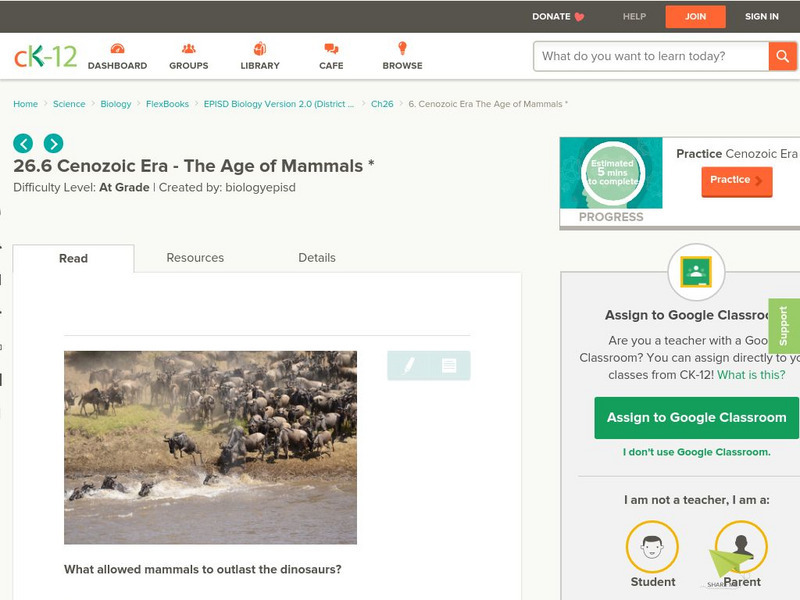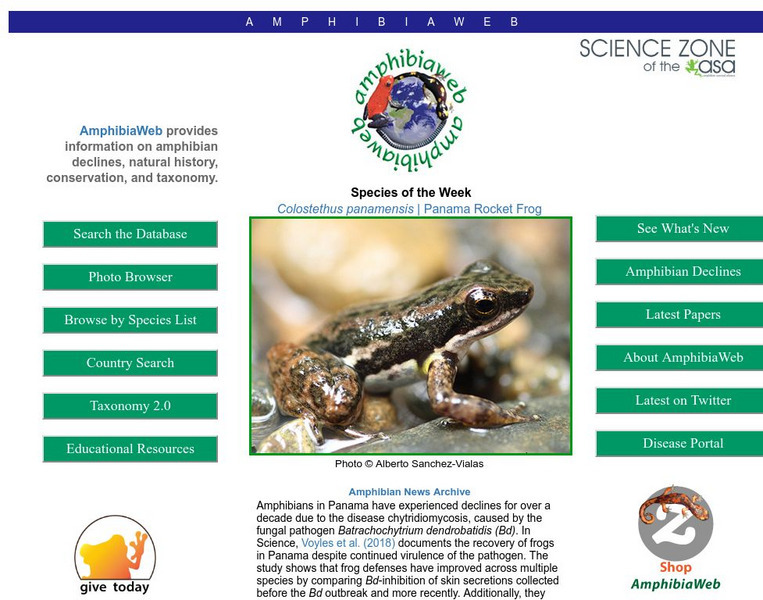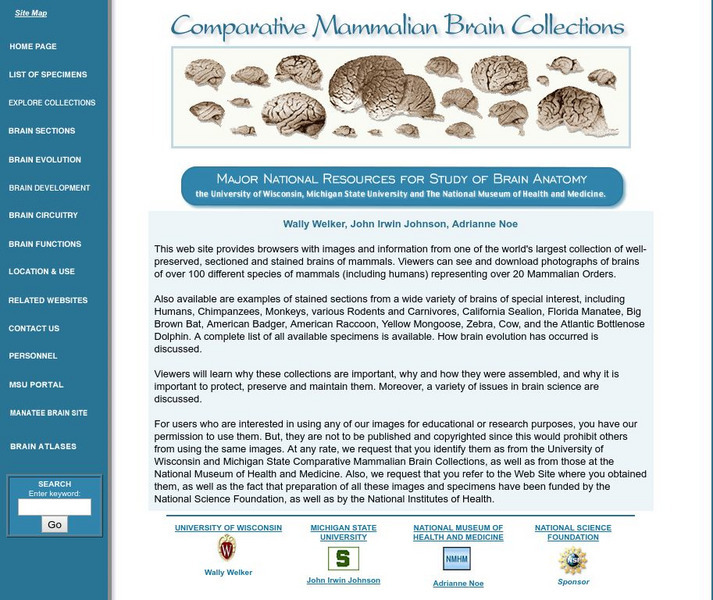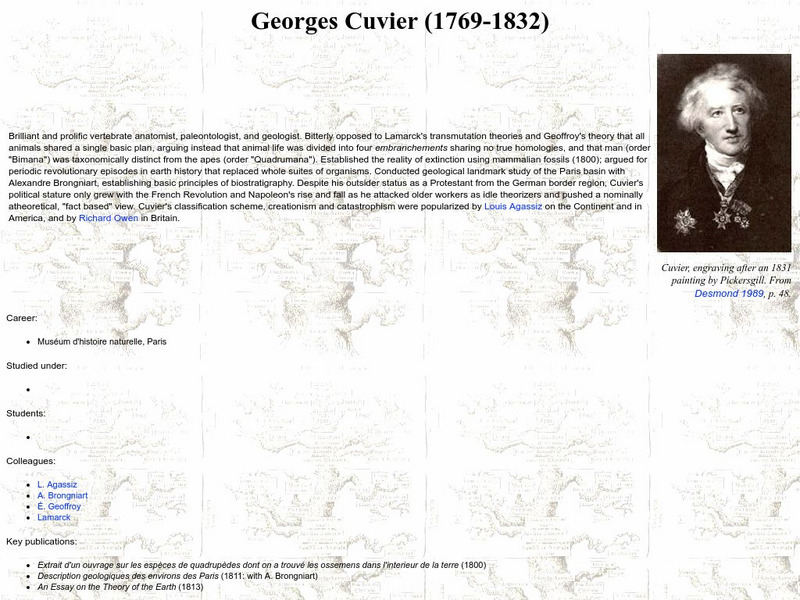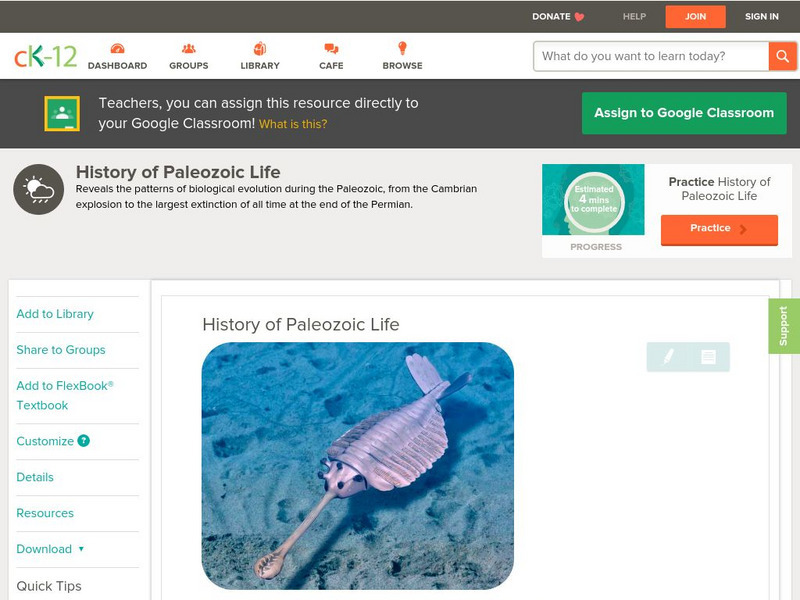Estrella Mountain Community College
Online Biology Book: Biological Diversity: Seed Plants
An in-depth reference explaining the role of seed plants in biological diversity. Photographs and labeled diagrams help learners with understanding.
Estrella Mountain Community College
Online Biology Book: Biodiversity: Nonvascular & Nonseed Vascular Plants
Photographs, informative tables, and illustrated diagrams help explain the diversity of the plant kingdom in this college-level textbook.
PBS
Pbs Nova: What Is Evo Devo?
Scientists can still be surprised! The genetic ingredients that assemble us are similar to those that assemble a fly. NOVA explains the emerging science of evolution developmental biology. This is the science that studies genes at the...
University of Arizona
University of Arizona: Genetic Drift Simulation
This site from the University of Arizona runs a two-step simulation of Genetic Drift. There are teacher's notes included. A great site to aid in understanding Genetic Drift.
CK-12 Foundation
Ck 12: Episd: Cenozoic Era the Age of Mammals
[Free Registration/Login may be required to access all resource tools.] The two periods of the Cenozoic Era, Tertiary and Quaternary, granted the mammals the time and space to evolve since the dinosaurs became extinct.
University of California
Regents of the University of California: Amphibia Web
AmphibiaWeb, a site inspired by global amphibian declines, is an online system that allows free access to information on amphibian biology and conservation. This site is filled with amphibian facts, a glossary of terms, species numbers,...
Other
National Museum of Health and Medicine: Comparative Mammalian Brain Collections
This resource could be used for higher level biology or anatomy classes. There are over 100 different species of mammals represented and each has information about physical characteristics, distribution, and pictures of the brain. There...
Biology Pages
Kimball's Biology Pages: Self Incompatibility: How Plants Avoid Inbreeding
Since evolution favors genetic variability what prevents pollen from fertilizing its own eggs? This effective site presents answers to this question.
CK-12 Foundation
Ck 12: Life Science: Microevolution and Macroevolution
[Free Registration/Login may be required to access all resource tools.] Does evolution only happen gradually through small changes? Or is it possible that drastic environmental changes can cause new species to evolve? Or can both small...
Other
Hamilton College: Plant Kingdom Spore Producers
A solid overview of the few plants that reproduce by spore production. Includes examples and an explanation of the early evolution of these plants.
Biology Corner
Biology Corner: Cladogram Analysis
A lesson plan where students analyze a cladogram to understand a derived characteristics between a group of organisms. After analyzing the prepared cladogram, students create their own.
BiologyWise
Biology Wise: Genetic Drift vs. Gene Flow vs. Natural Selection
Explains what genetic drift, gene flow, and natural selection are, and compares their differences, two at a time.
BiologyWise
Biology Wise: 4 Basic Modes of Speciation Show How Species Evolve
Explains what the four main modes of species formation are - allopatric, parapatric, peripatric, and sympatric speciation - and provides examples. A fifth possible mode, stasipatric speciation, is also discussed.
PBS
Pbs Learning Media: Genetic Variation
This video segment from NOVA: "Cracking the Code of Life" explores the genetic similarities and differences among organisms.
PBS
Pbs Learning Media: Shape of Trees: The Frustration Principle
This series of images shows the work of biologist Karl Niklas on the adaptations and evolution of plants. From The Evolutionary Biology of Plants.
PBS
Pbs Learning Media: Animal Body Plans: Homeobox Genes
The homeobox genes that define the basic body plan of mice and fruit flies are illustrated in this graphic from The Human Evolution Coloring Book by Adrienne Zihlman. The accompanying article describes how these genes act as "molecular...
PBS
Pbs Learning Media: American Chestnut Tree
This annotated slideshow adapted from KET's Electronic Field Trip to the Forest illustrates how blight decimated the American chestnut tree and the methods scientists use to identify and pollinate the remaining trees to create...
CK-12 Foundation
Ck 12: Biology: Fossils
[Free Registration/Login may be required to access all resource tools.] Describes how fossils help us understand the past.
National Center for Ecological Analysis and Synthesis, University of California Santa Barbara
University of California: George Cuvier
This site from the University of California discusses the contributions and ideas of George Cuvier related to classification, evolution, and catastrophism.
CK-12 Foundation
Ck 12: Biology: Coevolution
[Free Registration/Login may be required to access all resource tools.] Describes coevolution and how it occurs.
The Franklin Institute
The Franklin Institute: Living Things Families
What do centipedes and crabs have in common? What's so special about a backbone? Check this site out from The Franklin Institute if you are interested in biology and classification.
American Institute of Biological Sciences
Action Bioscience: Species, Speciation and the Environment
The American Institute of Biological Sciences offers this article by Niles Eldredge, evolutionary theorist and curator at the American Museum of Natural History. Eldredge begins with Darwin's theories and summarizes subsequent thought,...
Khan Academy
Khan Academy: Genetic Drift
Find out how evolution happens due to chance events. Explore the bottleneck effect and founder effect.
CK-12 Foundation
Ck 12: Earth Science: History of Paleozoic Life
[Free Registration/Login may be required to access all resource tools.] Patterns of biological evolution during the Paleozoic Era.


